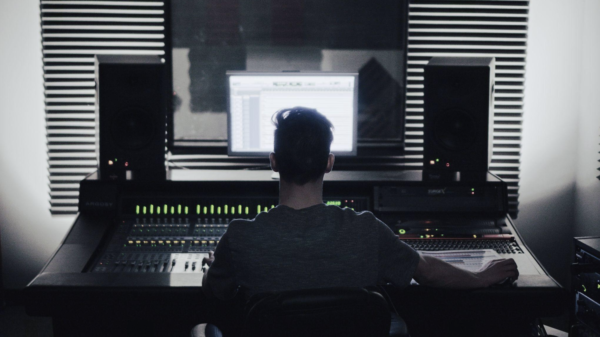Call them the concert illuminati. You’re at a show in an arena or stadium, watching Bruce Springsteen, Chris Stapleton, Coldplay, Madonna, or Weezer, when suddenly the darkness is dotted with dozens, hundreds, then thousands points of light — all from cellphones. The origin story of this concert ritual is a bit vague, but a new Bob Dylan collection offers one possible answer.
Last week, Dylan and the Band’s 1974 tour was commemorated with The 1974 Live Recordings, a hernia-inducing box set of more than two dozen shows recorded during that run. The tour, which lasted all of roughly six weeks and revived Dylan’s career, was weighty on several levels. It marked Dylan’s return to the touring world after eight years, reunited him with the Band (who’d backed him on his previous, often controversial electric shows), and was a financial juggernaut: So many people wrote in for the mail-order-only tickets that Dylan’s then-label head, David Geffen, bragged to Newsweek that “2 to 3 million” letters were sent back.
But equally important, the 1974 tour may have been the moment when expressing joy at a concert by way of real or artificial luminescence truly, well, came to light.
Of course, it’s difficult to say exactly when, where, and how lighting a match, cigarette lighter, or cellphone at a concert became a thing. At the very least, it can be traced back to the late troubadour Melanie, a.k.a. Melanie Safka. In 1969, Melanie, who died this past January at 76, was booked at Woodstock. By the time of her set, the rain had started, and as she told Rolling Stone, “Ravi Shankar had just finished up his performance, and the announcer said that if you lit candles, it would help to keep the rain away. By the time I finished my set, the whole hillside was a mass of little flickering lights.”
Melanie memorialized the scene in her subsequent hit “Lay Down (Candles in the Rain),” a wailing slice of pop-gospel that hit Number Six on the Billboard singles chart in 1970. “Once the song was released, it was like the thing to do — to bring your wire hangers to Mommie Dearest,” she told Classic Bands in an undated interview. “If you’re going to a Melanie concert, you bring your candles, your lighters, or your matches. Now of course people bring cellphones.”
Editor’s picks
For at least another few years, the tradition continued at her shows sporadically. When she played Carnegie Hall in 1973, the year before the Dylan shows, fans lit candles they’d smuggled into the venue. But since she was excised from the Woodstock movie (and even, she claimed, a subsequent documentary that would have reinforced that moment), the connection between Melanie and concert lighting never quite gained cultural traction.
That wouldn’t be the case starting with the opening night of Dylan and the Band’s tour in Chicago in January 1974. A New York Times reviewer noted, “At the end of the concert the members of the audience stood and cheered Mr. Dylan, and thousands lighted matches and held them high in tribute.” Covering the tour for Rolling Stone, Ben Fong-Torres noted matches igniting at the same show.

Bob Dylan in 1974
Barry Feinstein/Legacy Recordings
Writing in Vanity Fair in 2016, Dylan himself recalled that moment in Chicago: “All of a sudden, somebody lit a match. And then somebody else lit another match. In short time, there were areas of the arena that were engulfed in matches.” Remembering the hostile response he and the Band had received years earlier, after he’d swapped acoustic for electric music, Dylan added that he and the musicians thought it was “apocalyptic”and “looked for the nearest stage exit, as none of us wanted to go down in flames.” But they soon realized they were wrong: The fans were expressing appreciation, not rage.
Related
From most reports (including one by longtime Dylan fan Steve Schwartz, who caught the tour at Nassau Coliseum on New York’s Long Island), the matches would be struck at several moments: before the encore or when Dylan hit the line “But even the president of the United States/Sometimes must have to stand naked” during “It’s Alright, Ma (I’m Only Bleeding).” The tour was taking place as the Watergate scandal was hitting overdrive and calls for then-President Nixon’s resignation were growing louder by the day. (Amusingly enough, one of the props for the funky living-room set was a fire extinguisher.)
Looking back at that tour, Fong-Torres jokes that fans probably brought matches or lighters “becuase they were smoking dope.” But like many, he can’t confirm whether this enlightened tradition began then, with Melanie, or with someone else. “I don’t know if it was the first time ever,” he recalls of the Dylan tour. Thinking back to other shows he saw at the time, he says, “Acts like the Stones were playing arenas, but I don’t think they inspired that kind of audience reaction. That’s what made the Dylan thing unique.”
The mythology or practice didn’t fade away with the final show of the tour. A few months later, Dylan released Before the Flood, a live souvenir of the shows. The cover photo, taken by Barry Feinstein, showed fans at one venue (which one is still unclear) holding matches. With that photo, for an album that peaked at Number Three on the Billboard album chart, the ritual became iconic, and memories of Melanie fans and their candles took a backseat. As she told Classic Bands, “Not many people realize that the entire event of lighting things at concerts begin with me at Woodstock.”
Trending
A new photo graces the front of the Dylan 1974 box set, but to veteran concert promoter Jimmy Koplik, Before the Flood remains “a classic cover.” Koplik, who booked shows by the Grateful Dead, Crosby, Stills, Nash & Young, and many more during that time, doesn’t recall any flames aglow at shows prior to the Dylan tour. But he has vivid memories of concerts soon after, especially metal ones, when fans of Judas Priest lit matches (and sometimes trashed the seats) at shows he promoted. Like Melanie, Koplik would run into safety issues as a result “The fire marshal would get crazy with us, and we’d say, ‘What can we do?’” Koplik says. “’We can’t douse the whole crowd.’”
No matter the origin story, at least some in the modern concert industry are relieved that we’ve moved beyond the days of actual flames in people’s hands. “Thank God for cellphones,” Koplik says. “You can’t set anything on fire.”



























